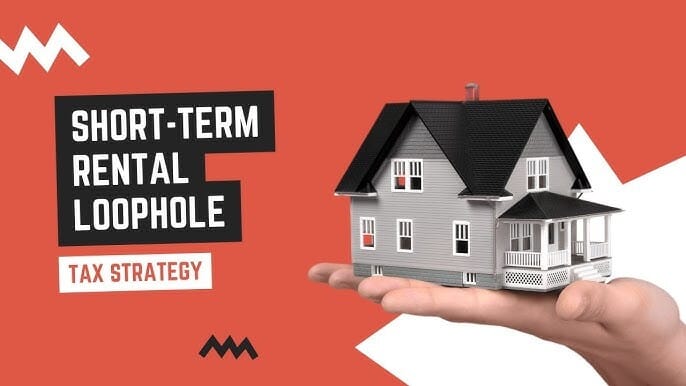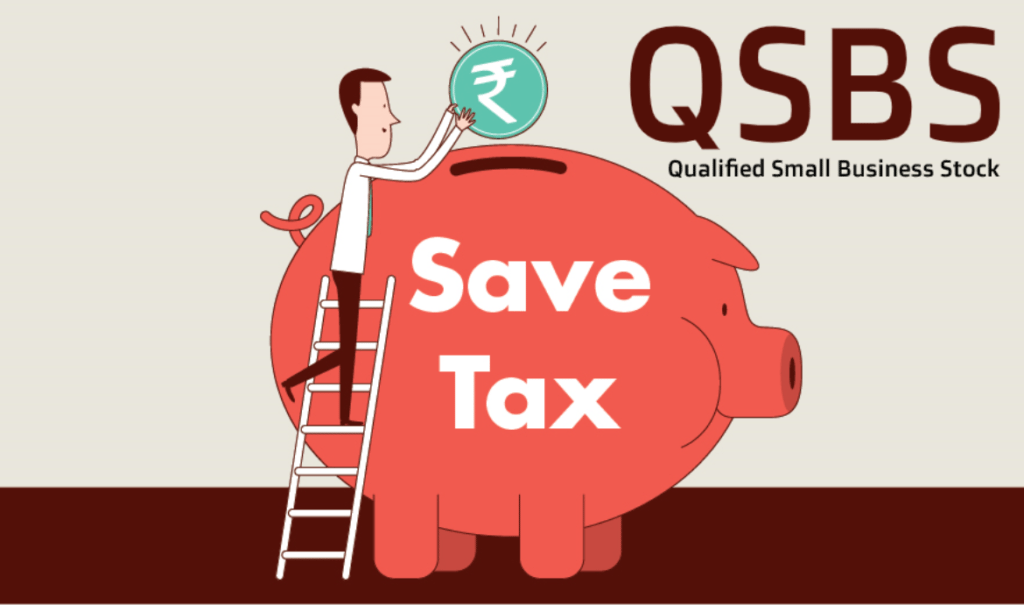- BeanWealth
- Posts
- New Tax Rules, Big Opportunities
New Tax Rules, Big Opportunities
Big Beautiful Bill Tax Breaks Explained
Good Evening! 👋
Happy Wealth Wednesday! In this newsletter, we will review all the tax breaks that investors like me and you get from the Big Beautiful Bill.
SPONSORED
The Future of Boating Is Electric
Vision Marine Technologies ($VMAR) is leading the electric boating revolution. With a world-record 116 MPH electric boat and the cutting-edge E-Motion™ powertrain, Vision Marine combines thrilling speed with zero-emission innovation.
The recent acquisition of Nautical Ventures expands its reach, making high-performance electric boats more accessible than ever. Vision Marine is shaping the future of eco-friendly boating with style, power, and sustainability. The water is changing, and Vision Marine is powering the wave.
Hey there,
As you probably know, the Big Beautiful Bill officially became law on July 4th, 2025.
I’m not here to have a political conversation about what’s inside the bill. But I have reviewed it closely for things like tax savings and investment advantages.
And what I found were three big opportunities for investors like you to save serious money on taxes.
As Warren Buffett has always said, there are a lot of things he would change about the tax code. But it’s not his job to rewrite it. It’s his job to understand the rules and use them to his advantage.
That’s exactly how I look at it, too.
This week, I want to walk you through three tax strategies that became even more powerful under the new bill. If you’re a high-income earner or someone building wealth through real estate, startups, or private deals, these are worth knowing.
Let’s start with one of my favorite plays in the game: short-term rentals.
Most importantly, even if you don’t have the capital or ability right now to use these strategies, I personally believe it’s incredibly important to understand the mindset of what people do when they have this type of capital. Why? Because you will be there one day.
1. The Short-Term Rental Strategy
This one is a game changer for W2 earners, 1099 workers, investors, and business owners. In other words, it impacts 100 percent of you reading this.
Here’s the idea: If you owe a large amount in taxes and find the right deal, you can use this strategy to cut your tax bill significantly while also owning a property that cash flows.
But a quick warning before we go any further:
This only makes sense if both of the following are true:
You have a big tax bill
You find a great short-term rental deal that actually makes money
Please don’t go out and buy a bad Airbnb just to save on taxes. If it doesn’t cash flow, you’re not saving anything. You’re just making a different kind of mistake.
With that said, let me show you how powerful this can be when done right.
Let’s say your friend Sarah has a good job, and she either expects a large tax bill at the end of the year or has already paid a substantial amount in taxes throughout the year. She decides to buy a $400,000 short-term rental with 20 percent down ($80,000).
Most people don’t realize this, but she gets tax benefits on the entire $400,000, not just what she puts down.
She pays $5,000 to $10,000 for a cost segregation study. That study breaks the property into land ($80,000, which can’t be depreciated) and building ($320,000, which can). It finds $80,000 in items like appliances and flooring that qualify for 100 percent bonus depreciation. She also gets $6,154 in regular depreciation. Total first-year write-off? $86,154.
At a 25 percent tax rate, that’s $21,539 in tax savings. That’s a 27 percent return on her $80,000 investment, just from taxes.
To use these losses against her W2 income, Sarah must meet two rules:
The average guest stay must be 7 days or fewer
She must materially participate by working at least 100 hours a year, and no one else (like a property manager) can spend more time on it than she does
What counts toward her 100 hours? Things like managing the listing, messaging guests, calling contractors, scheduling cleanings, adjusting pricing, and handling marketing.
Why this works:
Most rental property losses are considered passive, so you can’t use them to offset W2 income unless you qualify as a real estate professional.
A real estate professional is someone who works in real estate full time, spends at least 750 hours per year on real estate activities, and more than half of their total working hours must be in real estate. That disqualifies most people with a regular job.
But short-term rentals are a special case. If Sarah meets the 100-hour rule and is actively involved, the IRS treats the rental like an active business. That means she can use the depreciation to reduce her regular income taxes, even if she works full time in another field.
Sarah will still owe taxes when she sells (that’s called depreciation recapture), but in the meantime, she’s getting what is essentially an interest-free loan from the IRS.
Key takeaway: You get depreciation on the full value of the property, not just your down payment. That’s what makes this one of the most powerful tax strategies available to high-income earners.

2. The Startup Stock Strategy (QSBS)
Let’s say Sarah didn’t want to invest in a short-term Airbnb or a manufacturing facility. She loves startups and prefers investing in businesses with big upside.
So in 2025, she puts $50,000 into an early-stage U.S. company during its seed round. The company is a C-corporation, has less than $75 million in assets, and is actively building products and hiring a team.
Because of that, her shares qualify as Qualified Small Business Stock, or QSBS.
Here’s why that matters.
If Sarah holds her stock for at least five years and the company does well, she can sell her shares and keep the entire gain without paying any federal tax on her profits.
Let’s say her $50,000 investment grows to $1 million over that time. That’s a $950,000 gain, and she wouldn’t owe any federal tax on it.
But under the new law passed in 2025, Sarah does not have to wait the full five years to see some of the benefits. There is now a tiered system:
• If she holds the stock for at least 3 years, she can exclude 50 percent of the gain
• If she holds it for 4 years, she can exclude 75 percent
• If she holds it for 5 years or more, she can exclude the full 100 percent
So if Sarah exits in year four with a $950,000 gain, only 25 percent of that would be taxed. That is a huge savings compared to a regular stock investment.
And here is where it gets even more interesting.
There used to be a $10 million cap on how much gain you could exclude per company. The new law raised that cap to $15 million. Starting in 2027, that number will increase each year with inflation.
That means Sarah can invest in more than one startup and get up to $15 million in tax-free gains from each one. If she writes early checks into multiple successful companies, the total tax savings could be massive.
To qualify for QSBS, a few things must be true:
Sarah must buy the stock directly from the company when it is issued
The company must be a U.S.-based C-corp
The company must use at least 80 percent of its assets to actively run the business
The company must have less than $75 million in assets when she invests
Key takeaway: QSBS gives Sarah the chance to invest early in startups and legally avoid paying taxes on millions of dollars in future profits. For investors who understand the rules, it is one of the most powerful wealth-building tools in the tax code.

3. The Opportunity Zone Strategy
Let’s say Sarah recently sold some stock and made a $100,000 profit. She knows that if she does nothing, she’ll owe around $20,000 in capital gains taxes.
But instead of paying that bill right away, she puts the $100,000 into an Opportunity Zone Fund. This allows her to delay the taxes she owes and potentially eliminate future taxes on any growth from that new investment.
Here’s how it works.
Opportunity Zones are areas across the country that have been designated as economically distressed. To encourage investment, the government offers major tax breaks to people who put capital into real estate or businesses inside these zones.
Sarah’s $100,000 goes into a Qualified Opportunity Fund, which could be used to build housing, improve commercial property, or fund operating businesses in one of these areas.
From a tax perspective, she gets three benefits:
She defers her $20,000 capital gains tax. She doesn’t have to pay it right away.
If she holds the investment for at least five years and it’s in a rural zone, she gets a 30 percent reduction on that tax bill. Her $20,000 owed drops to $14,000.
If she holds the new investment for ten years, any appreciation on that $100,000 is completely tax-free.
So if her investment doubles to $200,000 after ten years, she pays nothing in federal tax on the $100,000 in growth.
And if it’s in a rural Opportunity Zone, she also benefits from simpler improvement requirements. Instead of having to double the value of an existing property, she only needs to improve it by 50 percent. Rural investments also receive priority status when new zones are designated starting in 2026.
There are some key timing rules to follow:
• Sarah has to invest the money within 180 days of the original sale
• She needs to hold the new investment for at least ten years to get the full exclusion on gains
• The fund itself needs to keep at least 90 percent of its capital invested in Opportunity Zone assets
This is not a strategy for someone who needs quick liquidity. The full benefit only comes with a ten-year hold. But if you’ve got a large capital gain and want to reinvest it long term, it’s one of the most generous tax programs still available.
Key takeaway: By rolling her gains into an Opportunity Zone Fund, Sarah delays taxes on her original profit and eliminates future taxes on the growth. If she chooses the right project and holds long enough, the tax savings can be massive.

This one is more complex and requires you to partner with funds.
Let’s say your friend Sarah has a good job, expects to owe a lot in taxes this year, and is looking for a new place to invest. She comes across a syndication deal building an advanced manufacturing facility and decides to put in $100,000 for a 10 percent ownership stake in the project.
What most people don’t realize is that Sarah can potentially deduct her entire $100,000 investment in year one, even though she still owns a piece of a long-term, income-generating asset.
Here’s how it works.
Her investment is split into two parts:
• $60,000 goes toward buying manufacturing equipment like robotics and CNC machines
• $40,000 goes toward constructing a brand-new manufacturing facility
The equipment qualifies for 100 percent bonus depreciation, which means that $60,000 can be fully written off in the first year. The building qualifies for a separate 100 percent deduction under a new rule for Qualified Production Property, which allows immediate write-offs for new manufacturing buildings placed in service by 2031.
That gives Sarah a total first-year deduction of $100,000.
At a 37 percent tax rate, that’s $37,000 in tax savings. A 37 percent return on her investment, just from lowering her tax bill.
To make this strategy work, the investment must be structured as an active business. That means the group Sarah invested with needs to actually run the manufacturing operation, make decisions about equipment, oversee production, and manage day-to-day operations. It can’t be completely hands-off.
Sarah doesn’t have to be involved directly, but the business itself must be active and not just a passive investment vehicle. That’s what allows her share of the losses to offset her W2 or 1099 income.
And if the project involves semiconductor equipment or similar tech, it might also qualify for an extra 25 to 35 percent tax credit under the Advanced Manufacturing Investment Credit.
Sarah will eventually pay tax if the investment appreciates and she sells at a gain. But in the meantime, she gets massive upfront savings while owning part of a productive, income-generating business.
Key takeaway: You can get a full deduction on your investment in the first year, as long as the deal is structured the right way and meets the rules. For high earners, manufacturing syndications are one of the most overlooked ways to reduce your tax burden while still owning real assets.
Final Thoughts
These are not theories. These are real strategies that smart investors are using right now to build wealth and keep more of what they earn.
Whether it’s buying a cash-flowing short-term rental, investing in a U.S. manufacturing syndicate, backing an early-stage startup, or rolling your capital gains into a long-term Opportunity Zone deal, the tax code rewards people who take action with intention.
You don’t have to use all of these today. In fact, you might not be in a place yet to use any of them.
But knowing how they work is how you shift your mindset. These are the strategies people use when they start to earn more, invest more, and think long term. Understanding how to use the tax code is part of playing the wealth game at a higher level.
Whether you are there now or not quite yet, I believe one thing is true.
You will be there one day.
Talk to you on Sunday,
Matt Allen

Disclaimer for BeanWealth
BeanWealth is a publisher of financial education and information. We are not an investment advisor and do not provide personalized investment advice or recommendations tailored to any individual's financial situation. The content provided through our website, newsletters, and any other materials is for educational purposes only and should not be construed as financial or investment advice.
All information is provided “as is,” without warranty of any kind. BeanWealth makes no representations or guarantees regarding the accuracy, completeness, or timeliness of the information presented. The opinions and views expressed in our content are those of the author(s) and do not necessarily reflect the views of BeanWealth, its partners, or its affiliates.
Investors should perform their own due diligence and consult with a professional financial advisor before making any investment decisions. None of the information provided herein constitutes a solicitation to buy or sell any securities or financial instruments. Any projections or forecasts mentioned are speculative and subject to risks and uncertainties that could cause actual outcomes to differ.
BeanWealth, its employees, and affiliates may hold positions (long or short) in the securities or companies mentioned, and these positions may change without notice. No guarantees are made regarding the continuation of these positions.
Forward-looking statements, estimates, or forecasts provided are inherently uncertain and based on assumptions that may not occur. Other unforeseen factors may arise that could materially affect the actual outcomes or performance of the securities discussed. BeanWealth has no obligation to update or correct any information after the date of publication.
BeanWealth disclaims any liability for losses or damages, whether direct or indirect, resulting from the use of the information provided. By accessing or using any BeanWealth content, you agree to this disclaimer and our terms of service.
Unauthorized distribution, reproduction, or sharing of this content is strictly prohibited and subject to legal action.
See you on Wednesday!
Cheers,
The Bean Team
Disclaimer for BeanWealth
BeanWealth is a publisher of financial education and information. We are not an investment advisor and do not provide personalized investment advice or recommendations tailored to any individual's financial situation. The content provided through our website, newsletters, and any other materials is for educational purposes only and should not be construed as financial or investment advice.
All information is provided “as is,” without warranty of any kind. BeanWealth makes no representations or guarantees regarding the accuracy, completeness, or timeliness of the information presented. The opinions and views expressed in our content are those of the author(s) and do not necessarily reflect the views of BeanWealth, its partners, or its affiliates.
Investors should perform their own due diligence and consult with a professional financial advisor before making any investment decisions. None of the information provided herein constitutes a solicitation to buy or sell any securities or financial instruments. Any projections or forecasts mentioned are speculative and subject to risks and uncertainties that could cause actual outcomes to differ.
BeanWealth, its employees, and affiliates may hold positions (long or short) in the securities or companies mentioned, and these positions may change without notice. No guarantees are made regarding the continuation of these positions.
Forward-looking statements, estimates, or forecasts provided are inherently uncertain and based on assumptions that may not occur. Other unforeseen factors may arise that could materially affect the actual outcomes or performance of the securities discussed. BeanWealth has no obligation to update or correct any information after the date of publication.
BeanWealth disclaims any liability for losses or damages, whether direct or indirect, resulting from the use of the information provided. By accessing or using any BeanWealth content, you agree to this disclaimer and our terms of service.
Unauthorized distribution, reproduction, or sharing of this content is strictly prohibited and subject to legal action.
